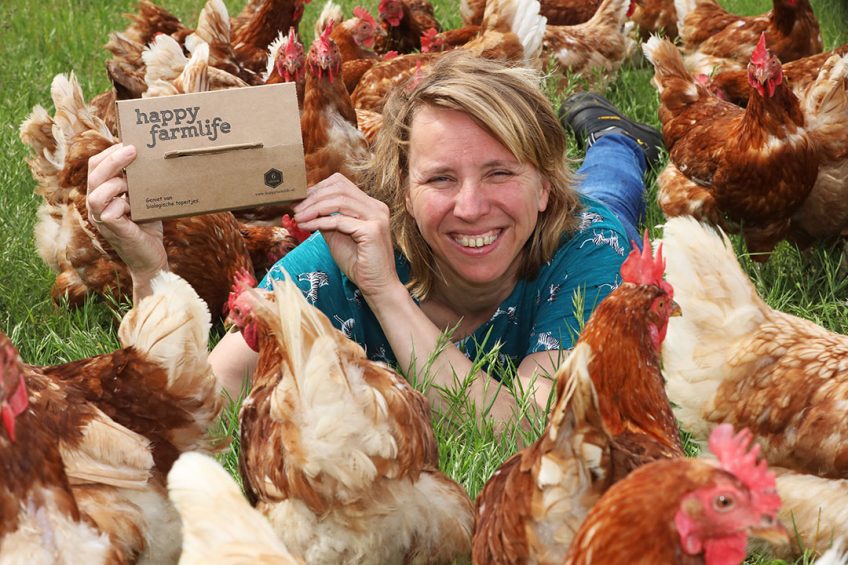Tips for marketing eggs from around the world

Marketing eggs offers a direct way of improving profit margins for farms but is by no means an easy task. A recent Nuffield Scholar in the UK, Jamie McIntosh, looked at how egg consumption is driven around the world.
The UK sits in the middle of the pack when it comes to egg consumption. While concerted efforts have seen the per capita number of eggs eaten per year rise steadily over the last 3 decades – now hovering at around the 200 a year mark – the UK still lags far behind super consumers like Japan (333) and Mexico (360).
The UK is also behind a number of countries with shoppers of a similar socio-economic profile. Australia, Canada, Denmark and Germany are all approaching 250 eggs a year, indicating there is room to lift consumption. It’s what drove Lohmann technical manager Jamie McIntosh to undertake a Nuffield Scholarship looking at different markets and how they drive egg consumption. He examined how businesses across the globe harness the health profile and convenience of eggs in their promotional messages1.

Health benefits of eggs
Eggs have a good story to tell when it comes to nutritional profile. They are a complete protein containing all 9 essential amino acids that the human body needs but cannot make for itself, as well as a range of vitamins, minerals and antioxidants. Hens’ diets can also be enriched to further boost nutrition, McIntosh says. But more recent work has found that eggs have a major role to play as a ‘brain food’. They contain a balance of fats that can feed brain development and are rich in choline – an essential nutrient important for memory function and healthy cells. Choline is of benefit to developing babies but it has been estimated that some 90% of pregnant women do not consume enough of it. At the other end of life, the vitamin D present in eggs (one of the few foods that contains it) and protein content can help to ward off sarcopenia – the degenerative loss of muscle mass common in the over 50s.
Matching trends to improve egg marketing
Egg producer Sunny Queen Australia has aligned its marketing with 8 “mega-trends” to drive sales and improve its market position. Read more…
Beyond human consumption
Research has identified a range of alternative uses for eggs that may come into play in future:
- Protein structures in egg whites can be used to fight infection.
- Yolk lipids could potentially be used as data transmitters in computer chips.
- Egg shells can be used to filter air without using energy.
- Egg membrane is increasingly used as an ingredient in pet food, as a source of pro-collagen.

Promotion
Most countries where eggs sales are strong have a central promotional body, like the British Egg Industry Council, to coordinate national marketing (see box, top targets for egg consumption). They often coordinate consumer-facing social media campaigns (top tip – keep content fresh) and increasingly target the food service sector. One campaign by Egg Farmers of Canada aimed to sell eggs to wholesalers by pointing out the benefits that are unique to eggs.
- Low cost and high profit potential.
- Little fluctuation in cost.
- Easy and quick to prepare.
- Safe and dependable supply.
- Consistent quality.
Top targets for egg consumptionAcross the world different egg bodies used profiling to find consumers that don’t consume eggs regularly and targeted them with campaigns.
|
Floating poultry farm connects farm and consumer
A Floating Egg Farm, in Rotterdam harbour. The pilot project will explore new interactions between farm and city, benefiting both. Read more…
Branding and enrichments
Across the world, McIntosh found a range of brands that promoted eggs as healthy and convenient foods. Many companies now offer enriched products with vitamins or nutrients like selenium added for example:
- Danish egg brand Danaeg, for example, markets Omega 3-enriched eggs and a liquid egg alternative based around fitness.
- Columbia’s Super Reyecitos brand, aimed at “strengthening the brain” during school years – enriched with Vitamin B9, selenium and omega 3.
- Japanese egg packer Akita offers a brand named Vita Gold – a multi-vitamin enriched pack with nine added vitamins including B1, B12, A, D, E and K, as well as omega fatty acids, DHA and EPA.
In China, McIntosh discovered, some businesses are selling more than 25% of their eggs online. Food for thought.
Emerging threatsEggs have had a mixed perception in the UK over the decades. In the 1960s the ‘Go to Work on an Egg’ advertising campaign drove consumption to a peak in the mid 1970s. It fell off a cliff as concerns over salmonella contamination emerged in the late 1980s, before slowly building again since then. The 2010’s have been marked by sustained campaigning by animal rights activists that has led to most retailers committing to the end of colony egg sales, McIntosh explains. Egg cholesterol levels are no longer considered a health concern but that message may not have reached shoppers effectively, he adds. The move to plant-based diets could also challenge egg consumption. JUST INC is one company determined to replace eggs with its mung bean-based substitute with products including mayonnaise, with Just Scramble already on the market. The company has raised more than US$ 200 million and aims to have “the widest impact as fast as possible” when it comes to replacing eggs produced by hens. McIntosh was struck by the company’s drive – five Michelin-starred chefs and a number of biochemists were involved in product development. |
1 Explore new ways eggs can be marketed to maintain a steady increase in egg consumption, by Jamie McIntosh, is available to download in full on the Nuffield Scholarship website and was supported by The MacRobert Trust and his employer Lohmann GB.













